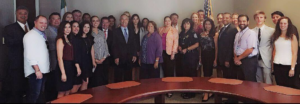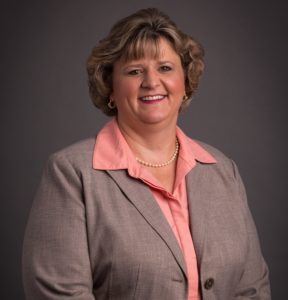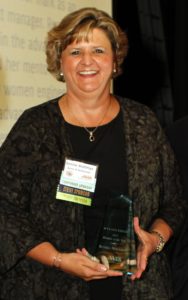June 21, 2016
The following content is from our latest Policy Update newsletter. To get these updates directly to your inbox, sign up here.
—
Last week, the Chamber team met with representatives from the private sector and economic development organizations across the U.S.-Mexico border. By strengthening cross-border relationships and uniting as one voice, the Chamber seeks to attract both public and private investment to the region.
The #OneBorder coalition worked to establish common policy goals, techniques, and methods of collaboration. The Wilson Center has provided the following notes from the meeting:
Discussion Item #1: Re-statement of Coalition’s Objective and summary of first #OneBorder coalition meeting in Las Vegas
Speaker: Michael Camuñez – President and CEO, ManattJones Global Strategies
The previous meeting held in Las Vegas established that an overarching problem driving the need for an initiative like the #OneBorder Coalition is a lack of understanding of the border in Washington, DC and Mexico City. The border is merely seen as a place that has to be secured and protected – a pass-through zone consisting of entry ports that allow people and goods to reach other places of the United States and Mexico. The #OneBorder Coalition is bringing together a group of private businesses, Chambers of Commerce, and others who have a stake in the border. The overarching goal is to provide a stronger voice to advocate for the interests of the border, educating Congress and the Mexican legislature to view the border as an asset and to invest accordingly.
The Las Vegas meeting identified a set of common challenges experienced by groups on the border – from San Diego and Tijuana to Brownsville and Matamoros. These included infrastructure, water, energy, and economic development. In order to overcome these challenges, it is key for border communities to share best practices. Recognizing that the border towns have undergone similar experiences and hardships at different times, they should share strategies that have worked in the past, rather than view each other solely as economic competitors.
While infrastructure is an important component for the border to continue growing, it is essential to look beyond that and map transborder industries, identifying clusters and zones that are strong in certain industries and shaping the narrative of the border as an economic driver. The group needs to talk to Mexican colleagues on how they see infrastructure priorities.
The ensuing conversation in Las Vegas centered around finding a common policy agenda that affects all border communities. This includes pushing hard for joint recognition of trusted traveler programs, extending and making permanent pre-clearance pilot programs, and shifting the focus of the High Level Economic Dialogue (HLED)’s subset of border issues to encompass more than just infrastructure. This can only be achieved by having meaningful border representation on bodies like the HLED and the CEO Forum.
It also means that there must be effective advocacy on all levels. Some questions that the Washington DC meeting needs to answer are the kinds of strategies that #OneBorder will employ such as Executive and Hill visits, and the kind of structure behind this organization. After answering these questions, it will be better able to engage people beyond the border and develop the right messaging and narrative that will catalyze meaningful progress.
Moving forward, it is important to remember that the #OneBorder Coalition is a private-sector organization, not a public body. While it will continue to engage members at all levels of government to realize the visions it has for the border, it is ultimately driven by private stakeholders.
Discussion Item #2: Presentation by Government Representatives on the importance of border stakeholder collaboration and how to positively impact Washington, DC and Mexico City policy-making on border issues
Speakers: Congressman Beto O’Rourke (D-TX 16th District) and Assistant Secretary of Homeland Security Alan Bersin
Note: This portion of the meeting was conducted off the record.
Discussion Item #3: Toward a Border-wide Policy Agenda
Speakers: Chris Wilson, Deputy Director of the Wilson Center’s Mexico Institute and Paola Avila, Vice President, International Affairs at the San Diego Chamber of Commerce
The policy agenda must be driven by border communities working together, not against one another. We must set aside the culture of competition and rivalry that has pervaded the border in the past, focus on areas of mutual benefit for the entire border region and share best practices.
A survey sent to the participants of the Las Vegas meeting and those invited to Washington ranked the 20 policy priorities initially identified in Las Vegas. In order to generate momentum and showcase early successes, the #OneBorder Coalition needs to focus on key public policies.
Based on the survey and discussion with group members, consensus was reached to prioritize the following goals for #OneBorder Coalition work:
- Promote joint recognition of trusted traveler programs: SENTRI, FAST, C-TPAT, NEEC, Global Entry, and Viajero Confiable
- Grant multiple entries for holders of a Mexican business visa (FMM) to eliminate requirement to return the visa on a daily basis
- Streamline the FM3 process
- Ensure that the border is a focus for the High Level Economic Dialogue (HLED) and the CEO forum
- Support U.S. Census and INEGI coordination and collaboration to promote harmonized data gathering and reporting (possibly through negotiation of a MOU)
- Start a list of specific asks for information currently lacking for both sides of the border
- Advocate for border-specific reports
- Pursue additional federal appointments for border region residents to ensure that border voices are being heard
- Identify a short list of candidates for key positions that affect the border
- Address staffing issues to implement border initiatives
- Formula-driven methods to ensure adequate and sustained staffing
- Ensure NADBank reauthorization and recapitalization
- Reinvigorating the Border Governors Conference and Border Mayors Association (or another meeting of mayors)
Policy agenda issues to be analyzed and considered for future #OneBorder prioritization and action:
- Support the Trans-Pacific Partnership
- Finding ways to best utilize existing forums, such as the Binational Bridges and Border Crossing Group (BBXG), the 21st Century Border Executive Steering Committee to include greater border stakeholder involvement
- Address the issue of border banks de-risking (closing accounts and closing branches). Related to Dodd-Frank.
- Expand CBP involvement in community outreach efforts
- Support agreements to allow emergency responders to easily cross the border • Workforce development efforts
- Education
Discussion Item #4: Discussion of potential techniques or types of collaboration to achieve the group’s goals
Speakers: Marcos Delgado – EVP Operations/Business Development, The Borderplex Alliance and Laura Rodriguez – Principal, The Raben Group
One of the primary issues that the #OneBorder Coalition must address is to educate the rest of the country on the border and the Coalition. There are three target audiences: elected officials at all levels of government, corporate heads, and national media leaders. Confirming ownership of the #OneBorder Twitter handle and the internet domain should be undertaken promptly, followed by development of a website that outlines the mission of the Coalition at the appropriate time.
The formality and structure of the #OneBorder Coalition was discussed but not resolved. Members who advocated for a formal structure to this organization cited reasons such as legitimacy and feasibility of fundraising. They also raised concerns about direct lobbying without being a licensed organization and limits within their own organization structures. Those members who advocated for a loose structure stressed the importance of being an inclusive movement, arguing that a formal structure might inherently exclude key supporters like the Wilson Center and the Bush Foundation from some of the Coalition’s initiatives. It was unanimously agreed that the #OneBorder Coalition intends to be a lasting, long-term organization, not just a movement that will be dissolved at a predetermined point such as the November 2016 election. Dialogue on the formality of the Coalition’s structure remains open as members continue to determine the most effective way to develop this organization while still promoting growth for the border in the meantime.
Discussion Item #5: Next Steps
Speakers: Lydia Nesbit – VP, Education/Workforce Development, The Borderplex Alliance and Federico Schaffler – Director of the Texas Center for Border Economic and Enterprise Development, Texas A&M International University in Laredo
The members will begin to execute the agreed-upon policy agenda and continue to discuss the structure and scope of the #OneBorder Coalition. This includes packaging the issues and creating a singular narrative for the border. Furthermore, several participants urged that the the scope of the Coalition be broadened to include education, the environment, and to define the nature of the organization.
Members were encouraged to identify and recommend Mexican stakeholders and political figures to target and include in this Coalition.
U.S.-Mexico Border Summit August 3-5 in El Paso, TX and Cd. Juárez, Mexico hosted by the Borderplex Alliance. Coalition members are encouraged to attend and a possible meeting may take place if there is a critical mass at the conference.
November 2016 Meeting: Tentative location(s): Tijuana and Ensenada, Baja California
December 2016 Meeting: Phoenix and Tucson were proposed as two potential meeting locations
Francisco Schaffler offered to host a future meeting in Laredo, Texas.
The host organization would be expected to organize the meeting and assume the meeting costs; participants would cover their own travel and lodging expenses.
Finally, continue spreading the #OneBorder hashtag on social media.








